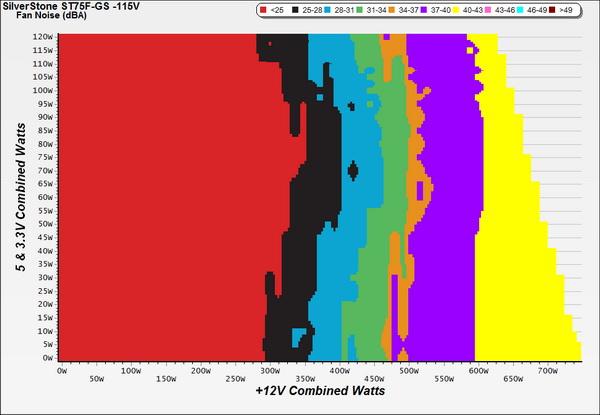SilverStone Strider Gold S V2 750W Review
SilverStone is the only company with so many compact PSUs in its portfolio. A while ago, it released the second version of the Strider Gold S with 750W of capacity.
Why you can trust Tom's Hardware
Efficiency, Temperature And Noise
Efficiency
Our efficiency testing procedure is detailed here.
Using the results from the previous page, we plotted a chart showing the ST75F-GS V2's efficiency at low loads, and loads from 10 to 110 percent of the PSU's maximum-rated capacity.
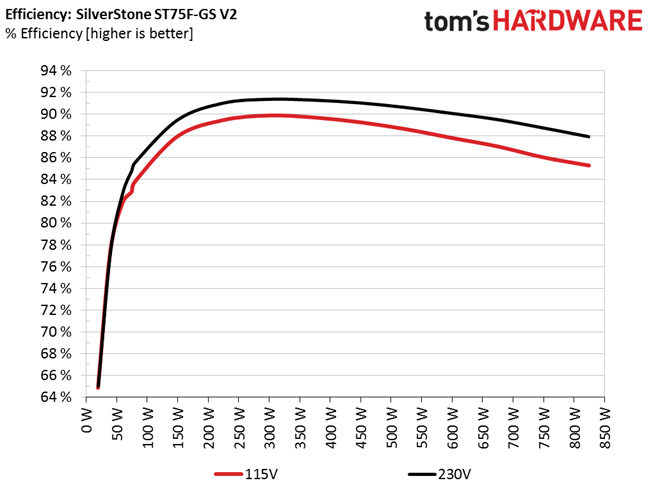
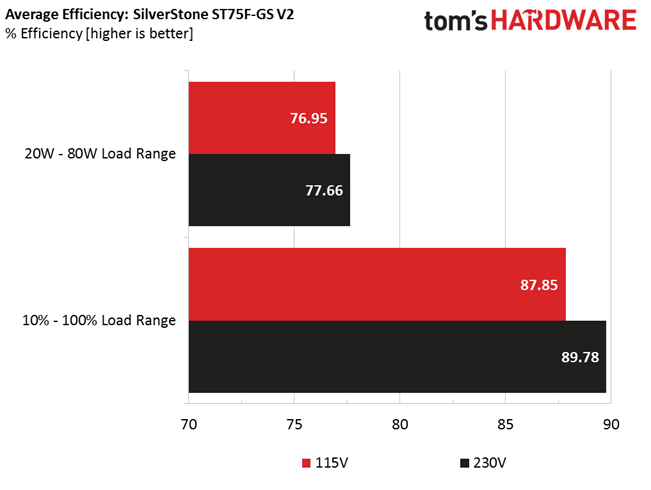
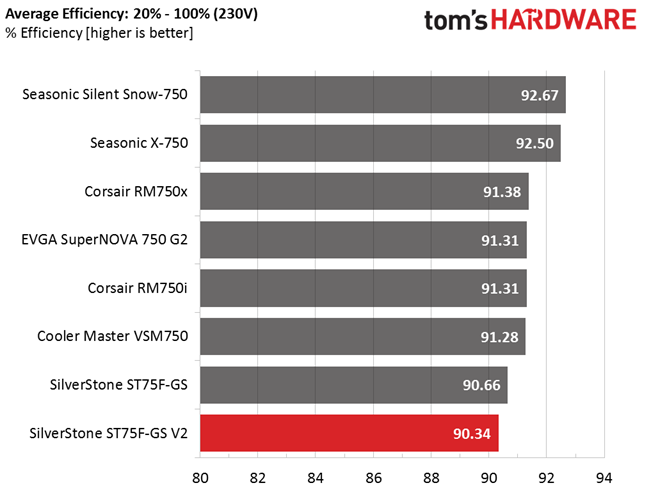
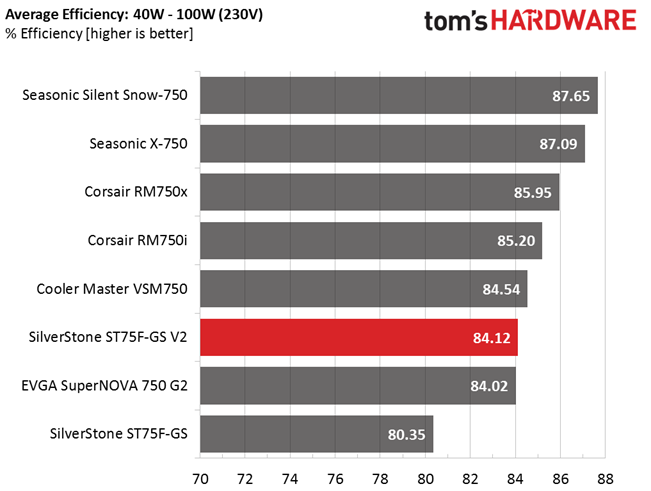
Although the second version of the ST75F-GS utilizes an LLC resonant converter, it still cannot match the first version under normal loads. Compared to the rest of the competition in this category, SilverStone's units finish in the back of the pack. Obviously, their compact dimensions are a major handicap when it comes to efficiency and overall performance in general.
Under light loads, the ST75F-GS V2 manages to beat its predecessor. This time around the newer version comes closer to the competition. However, some similarly-priced units still achieve notably higher efficiency, demonstrating that the Sirfa platform has room for improvement.
Efficiency At Low Loads
In the following tests, we measure the ST75F-GS V2's efficiency at loads significantly lower than 10 percent of the device's maximum capacity (the lowest load the 80 PLUS standard measures). The loads we dialed were 20, 40, 60 and 80W. This is important for representing when a PC is idle, with power-saving features turned on.
| Test # | 12 V | 5 V | 3.3 V | 5 VSB | Power(DC/AC) | Efficiency | Fan Speed | Fan Noise | PF/AC Volts |
|---|---|---|---|---|---|---|---|---|---|
| 1 | 1.192A | 0.481A | 0.476A | 0.191A | 19.61W | 64.83% | 1055 RPM | 33.7 dB(A) | 0.918 |
| 12.213V | 5.144V | 3.344V | 5.180V | 30.25W | 115.1V | ||||
| 2 | 2.409A | 0.970A | 0.987A | 0.385A | 39.69W | 77.38% | 1095 RPM | 35.4 dB(A) | 0.966 |
| 12.213V | 5.135V | 3.339V | 5.170V | 51.29W | 115.1V | ||||
| 3 | 3.638A | 1.459A | 1.497A | 0.580A | 59.87W | 81.85% | 1200 RPM | 38.0 dB(A) | 0.979 |
| 12.207V | 5.125V | 3.334V | 5.161V | 73.15W | 115.1V | ||||
| 4 | 4.851A | 1.953A | 1.980A | 0.774A | 79.75W | 83.75% | 1285 RPM | 38.3 dB(A) | 0.984 |
| 12.200V | 5.118V | 3.328V | 5.150V | 95.22W | 115.1V |
At low loads, efficiency is hugely improved compared to SilverStone's first version of this unit. However, it still cannot match the tough competition. In addition, the fan spun at high speeds during our tests, which was surprising considering the light loads we applied. It seems that ambient temperatures that exceed 38 °C force the fan controller to push high speeds, even when the PSU is only lightly loaded.
5VSB Efficiency
The ATX specification states that 5VSB standby supply efficiency should be as high as possible, recommending 50 percent or higher efficiency with 100mA of load, 60 percent or higher with 250mA of load and 70 percent or higher with 1A or more of load.
Get Tom's Hardware's best news and in-depth reviews, straight to your inbox.
We will take four measurements: one each at 100, 250 and 1000mA, and one with the full load the 5VSB rail can handle.
| Test # | 5VSB | Power (DC/AC) | Efficiency | PF/AC Volts |
|---|---|---|---|---|
| 1 | 0.101A | 0.52W | 72.22% | 0.100 |
| 5.189V | 0.72W | 115.1V | ||
| 2 | 0.252A | 1.31W | 76.61% | 0.192 |
| 5.184V | 1.71W | 115.1V | ||
| 3 | 1.002A | 5.17W | 78.81% | 0.321 |
| 5.162V | 6.56W | 115.1V | ||
| 4 | 3.002A | 15.29W | 75.81% | 0.383 |
| 5.092V | 20.17W | 115.1V |
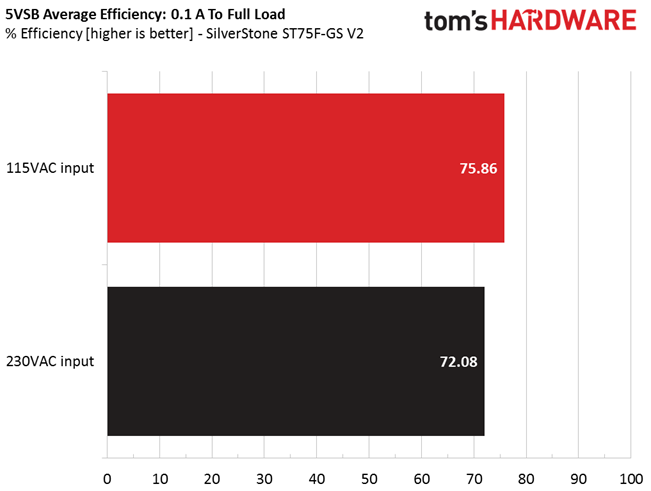
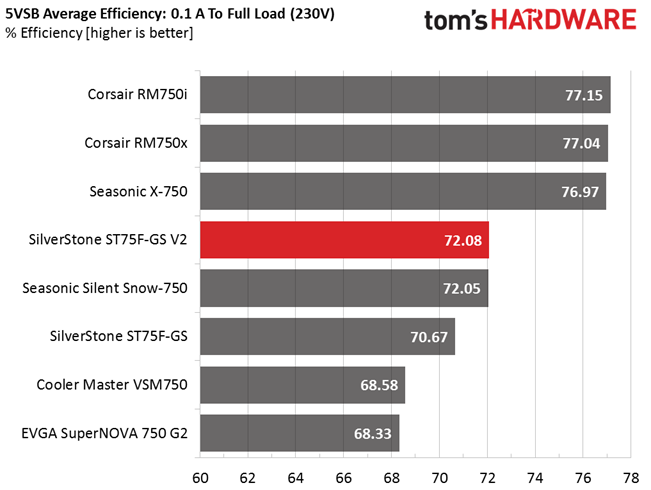
The 5VSB rail didn't impress us either. Its efficiency levels were only average, and under full load, the supply's efficiency took quite a hit, indicating that 3A on this rail is close to the unit's limit.
Power Consumption In Idle And Standby
| Mode | 12 V | 5 V | 3.3 V | 5VSB | Power (AC) | PF/AC Volts |
|---|---|---|---|---|---|---|
| Idle | 12.345V | 5.151V | 3.350V | 5.191V | 11.06W | 0.691 |
| 115.1V | ||||||
| Standby | 0.10W | 0.014 | ||||
| 115.1V |
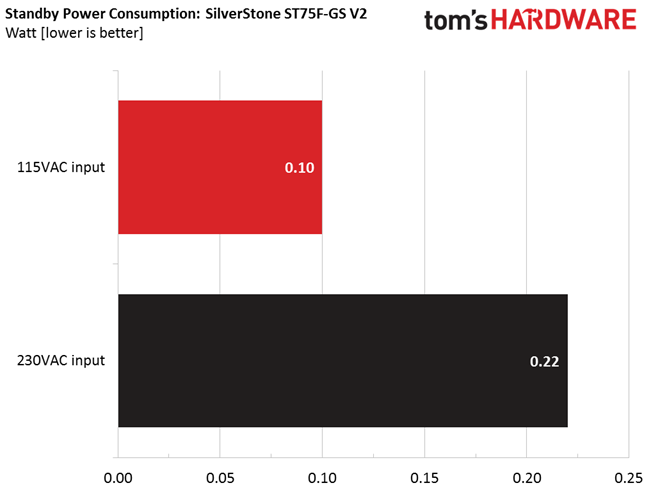
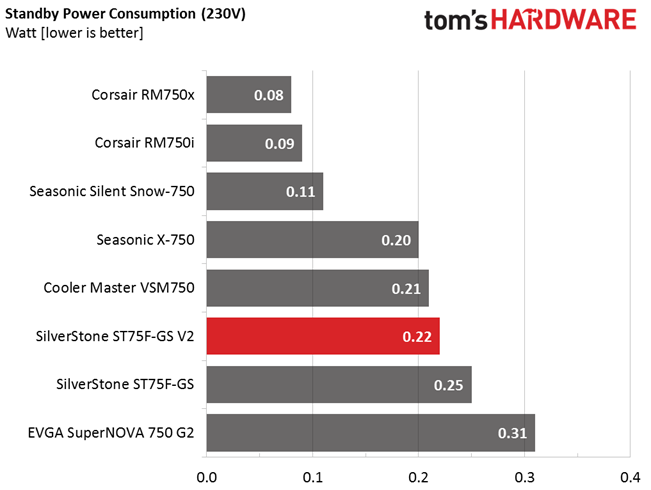
In the table above, you'll find the power consumption and voltage values of all rails (except -12V) when the PSU is idle (powered on, but without any load on its rails), and the power consumption when the PSU is in standby (without any load, at 5VSB).
Vampire power was quite low. However, this wasn't enough to allow for a highly efficient 5VSB rail.
Fan RPM, Delta Temperature And Output Noise
Our mixed noise testing is described in detail here.
The first chart below illustrates the cooling fan's speed (RPMs), and the delta between input and output temperature. The results were obtained at 37 °C (98.6 °F) to 46 °C (114.8 °F) ambient temperature.
The next chart shows the cooling fan's speed (RPMs) and output noise. We measured acoustics from one meter away, inside of a small, custom-made anechoic chamber with internals completely covered in sound-proofing material (be quiet! Noise Absorber kit). Background noise inside the anechoic chamber was below 18 dB(A) during testing, and the results were obtained with the PSU operating at 37 °C (98.6 °F) to 46 °C (114.8 °F) ambient temperature.
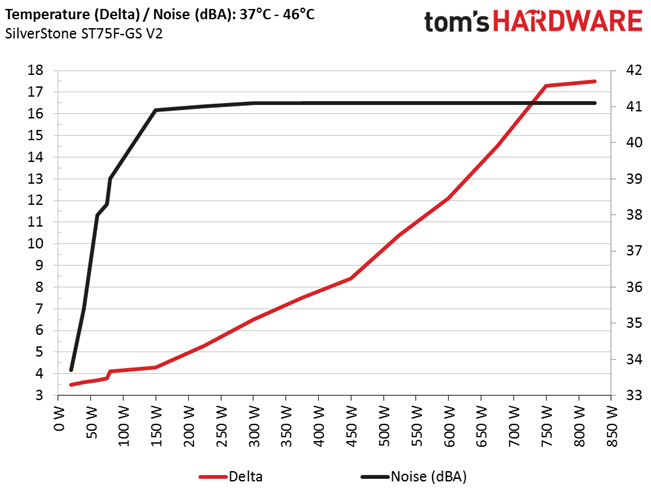
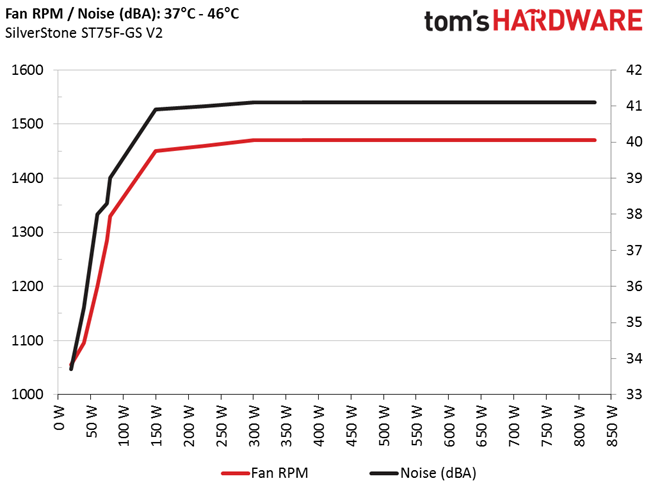
The following graph illustrates the fan's output noise over the PSU's operating range. The same conditions of the above graph apply to our measurements, though the ambient temperature was between at 28 °C (82.4 °F) to 30 °C (86 °F).
With normal ambient temperatures (for the internals of a PC chassis), the PSU is silent up through a 300-350W load, and the fan's noise stays below 30 dB(A) loaded with up to 400W. Under more taxing loads, the fan's speed increases quickly. Even the worst case doesn't exceed 43 dB(A), though. Compared to its predecessor, the ST75F-GS V2 features much quieter operation.
Current page: Efficiency, Temperature And Noise
Prev Page Load Regulation, Hold-Up Time And Inrush Current Next Page Cross-Load Tests And Infrared Images
Aris Mpitziopoulos is a contributing editor at Tom's Hardware, covering PSUs.
-
Eggz At first glance, I thought this was a 750 w in an SFS form factor. Womp! . . . Still seems like a decent PSU, though.Reply
